
Introduction
As with the
Home Page
of the site,
scrolling down this page will give a rapid view of the images, in this case
with information to accompany them.
The Home Page shows images arranged in rows. Many of
these rows, the ones with numbers on the right side of the page, have images
with links
to this page. These are images which, when clicked, don't direct to other pages, the very varied pages which make up the site. The other images do direct to other pages when clicked.
This page, then, gives information about the images which don't form part of other pages. In most cases, the image on this page is much larger than the image on the Home Page. I intend to add many more images and accompanying text to this page, which is the most recent on the site.
The numbers in the captions below refer to the numbers of the rows on the
Home Page.
Images and text

The poster relates to slaves on the island of
St Helena, colonized in 1659. Extract from the St Helena 'Laws and
Orders, constituted for the Negro Slaves, by the inhabitants of the
island, with the approbation of the Governor and Council,' 1670:
That no Black or Blacks, upon any pretence whatsoever, shall wander from his master’s plantation upon Sundays, without a lawful occasion granted by their said masters or mistresses, either by writing, or some other token that shall be known by the neighbourhood, upon the penalty of ten lashes on his naked body for the first offence, fifteen for the second, twenty for the third, and so for every offence thereafter committed ...
Those that shall absent their masters’ service three days, and three nights, shall be punished according to the last foregoing article, and the master make satisfaction for what they have stolen as aforesaid. For the first offence of this kind, the master or masters shall make satisfaction for what is stolen, and repair all damages done by the slave or slaves ; so soon as taken, shall be brought to the fort, and immediately receive, on his naked body, one hundred lashes, then secured ; four days after that, thirty; six days after that, twenty more, and branded in the forehead with the letter R : for the second offence in this kind, he shall be punished as above said, and wear, for one year, a chain and clogs of thirty pounds weight ; and for the third offence, satisfaction shall be made as above said to the loser or losers, and the slave or slaves shall suffer death, at the discretion of the Governor and Council.
In case any, slave, from the age of sixteen years and upwards, shall presume and attempt to strike or assault any white person whatsoever, correcting him or otherwise, for any cause whatsoever, shall, for the said offence or offences (though without weapon or dangerous instrument) undergo and suffer the punishment of castration, that is to say, shall have his, testicles cut out ...
In 1693, a slave called Jamy was sentenced to be burned alive for 'sorcery.'
The Apostle Paul includes sorcery in the list of 'works of the flesh:'
“Now the works of the flesh are evident: sexual immorality, impurity,
sensuality, idolatry, sorcery, enmity, strife . . . and things like
these. I warn you, as I warned you before, that those who do such things
will not inherit the kingdom of God” (Galatians
5:19-21).
St Helena takes its name from Saint Helena, born about 250 and the mother of the emperor Constantine. It is claimed that on a pilgrimage, she discovered the actual cross on which Jesus was crucified. As a result of this discovery, she is revered as a saint by the Roman Catholic Church, the Anglican Church, the Eastern and Oriental Orthodox Church and the Lutheran Church.
She actually found three crosses but a woman who was very ill touched all three crosses. After touching the first and second, nothing happened but when she touched the third cross, she suddenly recovered, so Helena declared that this must be the True Cross of Jesus.
It was also claimed that Helena found the nails used in the crucifixion of Jesus.
Throughout its history as a slave-owning, slave flogging, slave castrating and slave executing jurisdiction - and afterwards - St Helena was Christian, with active churches, where the gospel was preached, prayers offered and Holy Communion was taken.
1. Sheffield Blitz
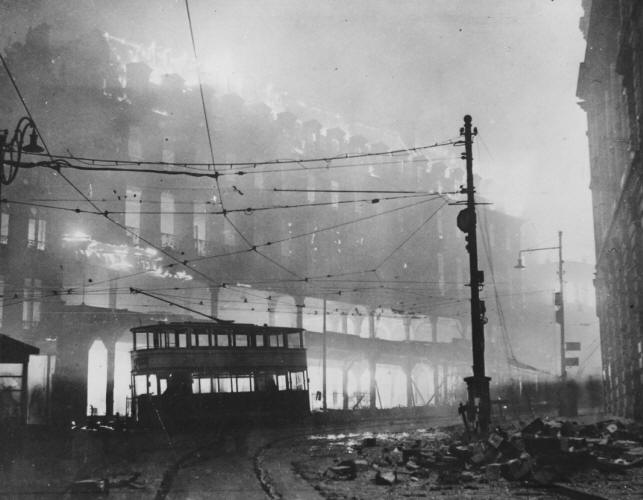
Scene during the Sheffield Blitz, the bombing of Sheffield by the Luftwaffe, December 1940. The codename for the operation was Schmelztiegel. During the attacks, over 600 people were killed, 1,500 were injured and 40,000 were made homeless.
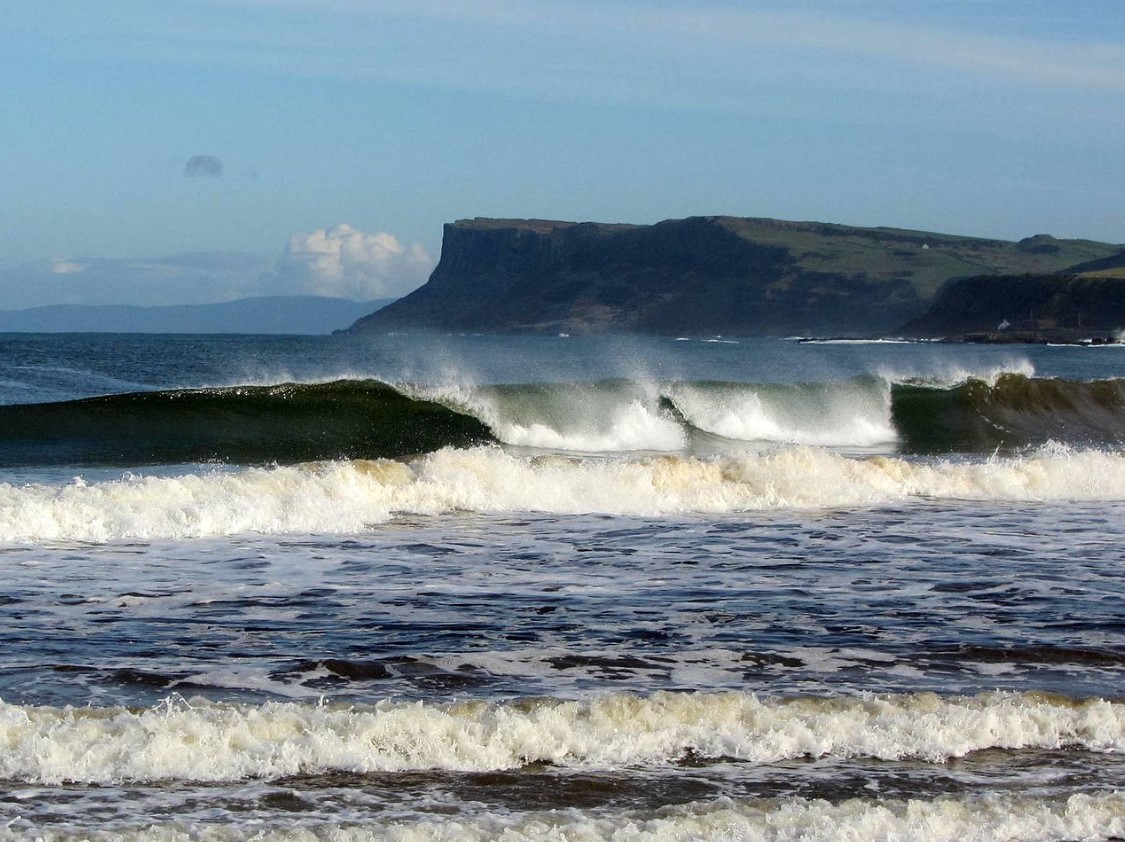
Coast at Ballycastle, Northern Ireland. In the background, the Scottish coast can be seen. Ballycastle, like a very large number of other locations, was affected by The Troubles. On 19 June 1979, the IRA bombed five hotels in vrious seaside towns of Northern Ireland, including the Marine Hotel in Ballycastle. An hotel guest died of the injuries he recieved in the blast. An off-duty policeman was killed when an IRA booby trap attached to his car exploded in a car park.
2.Sheffield Diocese Coat of Arms
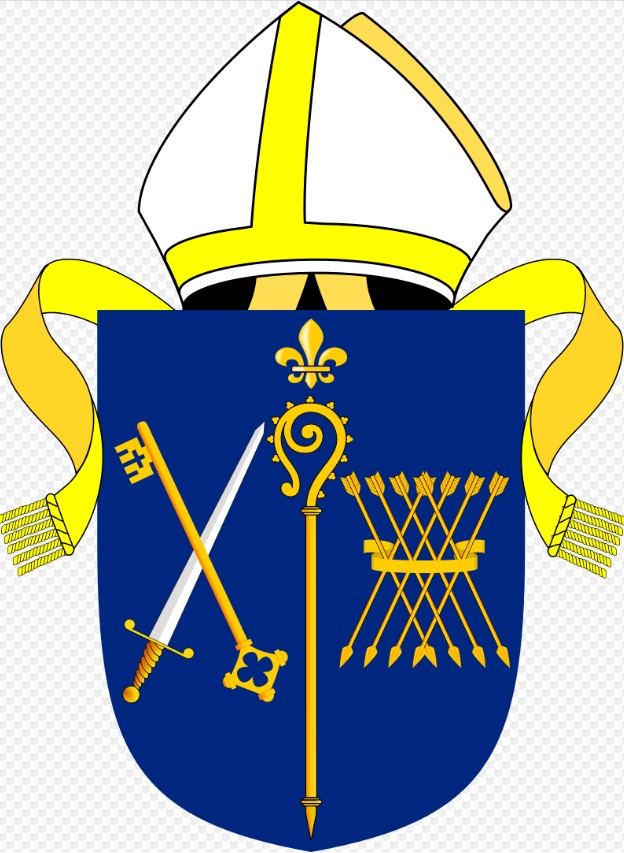
My page Counter-evangelism: a guide to some South Yorkshire / Derbyshire churches has sections on some staff members at Sheffield Cathedral in the second column.
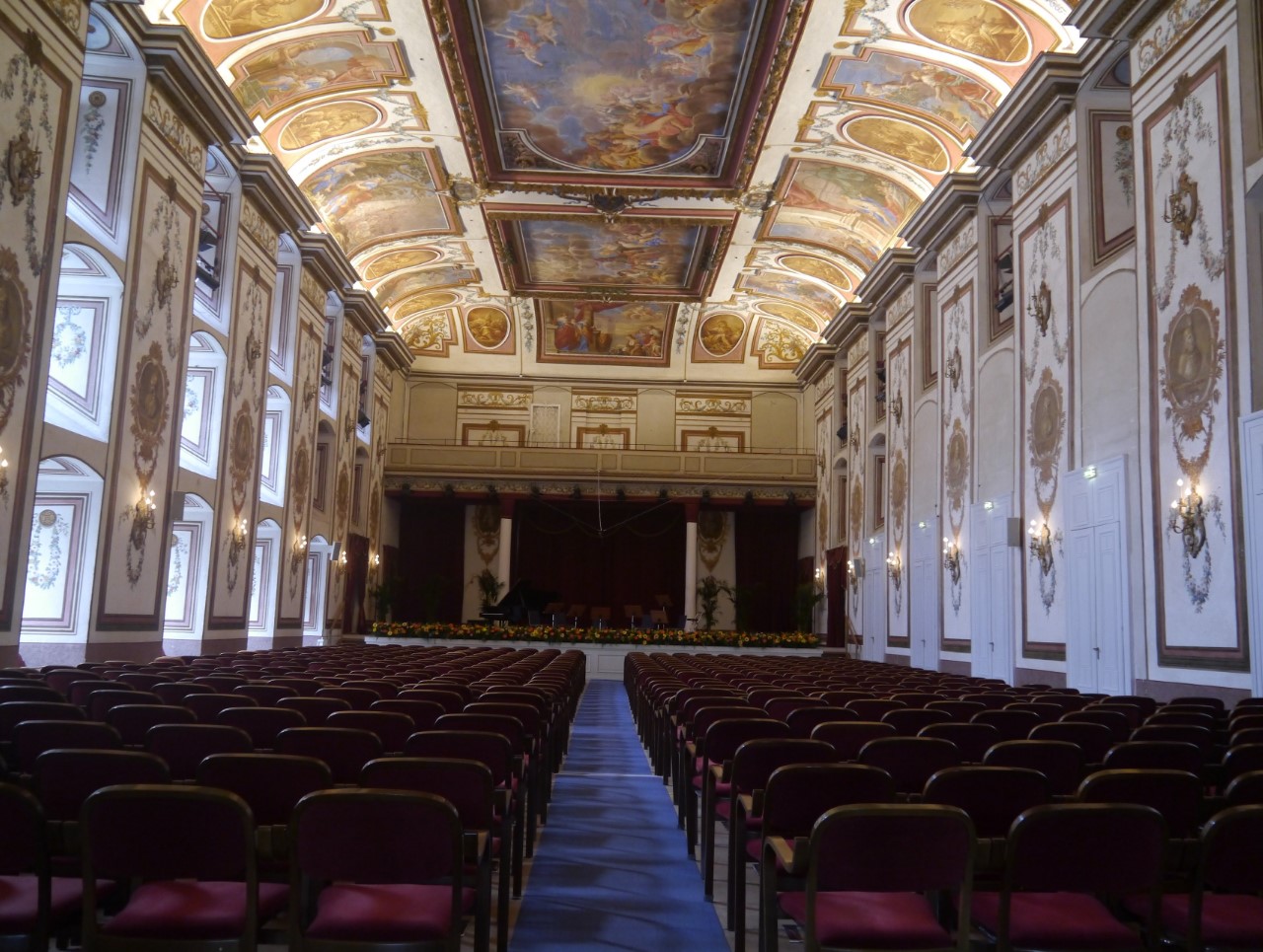
The Haydnsaal, in the Palace of Esterhazy (Schloss Esterhazy), Eisenstadt, Austria has been ranked as one of the most beautiful and acoustically perfect concert halls in the walls. The hall is named after the composer Haydn, who worked for many decades in the service of the Esterházy family.

The Website ArchbishopLefebvre.com gives a conservative view of baptism. It includes this ridiculous, borderline deranged opinion - which is in accordance with Roman Catholic canon law:
'The code of canon law explains that "true, clean, and natural water" is
necessary for baptism (canon 849). Liquids can be assessed in three
categories: Those that are certainly valid, those that are doubtfully valid,
and those that are certainly invalid. Certainly valid liquids include water
as found in rivers, oceans, lakes, hot springs, melted ice or snow, mineral
water, dew, slightly muddy water (as long as the water predominates), and
slightly brackish water.
'Doubtfully valid liquids are those that are a mixture of water and some
other substance, such as beer, soda, light tea, thin soup or broth, and
artificially scented water such as rose water.The last category is of
liquids which are certainly invalid. It includes oil, urine, grease, phlegm,
shoe polish, and milk.
'The rule of thumb is that, in emergency situations, you should always
try to baptize with certainly valid liquids, beginning with plain, clean
water. If plain water isn't available, baptize with a doubtfully valid
liquid using the formula, "If this water is valid, I baptize you in the name
of the Father . . ." ... Never attempt to baptize anyone with a certainly
invalid liquid.'
So, in an emergency, baptizing a baby with beer or thin soup (but not thick soup) will be adequate or more than adequate, providing the priest says 'I baptize you in the name of the Father ... ' But attempts to baptize a baby with shoe polish won't work, even if the priest says 'I baptize you in the name of the Father ... ' Canon law makes this absolutely clear.
Augustine (Augustine of Hippo) is recognized as a saint by the Church of England as well as the Roman Catholic Church.
Augustine believed that infants who are not baptized go to hell as a result of 'original sin' (he was the first writer to use the term.) The 'Church Fathers' who followed Augustine adopted his position. Augustine believed that original sin began with Adam and identified male semen as the means by which original sin was inherited. As late as 1930, Pope Pius XI stated, 'The natural generation of life has become the path of death by which original sin is communicated to the children.' The medieval cathedrals which attract so many visitors - although not nearly as many worshippers as in the past - were places where these and other horrific doctrines were taught - and enforced, with the aid of the courts and the mob.
The page
https://www.newadvent.org/fathers/15011.htm
gives extracts from 'Saint' Augustine on infant baptism and other topics. The section, 'Why one is is baptized and another not ... ' contains this:
'Now those very persons, who think it unjust that infants which depart this life without the grace of Christ should be deprived not only of the kingdom of God, into which they themselves admit that none but such as are regenerated through baptism can enter, but also of eternal life and salvation - when they ask how it can be just that one man should be freed from original sin and another not ...'
followed by more convoluted, hideous explanation.
8. Allied tanker
sinking

Allied tanker sinking, after being torpedoed during the Battle of the Atlantic, 1942. In the Second World War, 32,000 merchant seafarers and over 50,000 members of the Royal Navy lost their lives.
10. Marple aqueduct
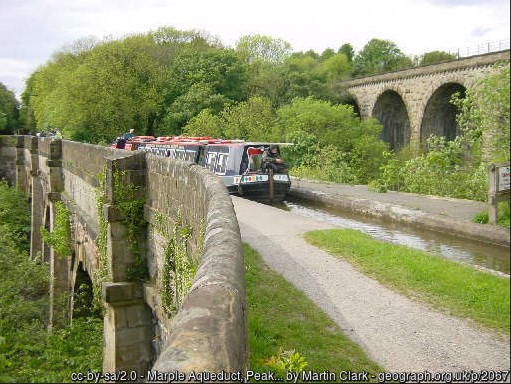
Marple aqueduct, at Marple, Greater Manchester was built to carry the Peak Forest Canal across the River Goyt. It was designed by the engineer Benjamin Outram and constructed under the supervision of the engineer Thomas Brown. Seven men were killed during its construction. The aqueduct is the highest canal aqueduct in England.
The structure is an outstanding achievement for many reasons, including its use of architectural feautures, such as ashlar pilasters, oval piers, stone of contrasting type and colour.
Also visible, the Marple Railway Viaduct, another astonishing achievement. This was built without loss of life.
10. Penrhyn Slate Quarry, near Bethesda, North Wales.

At the end of the nineteenth century, Penrhyn was the largest slate quarry in the world. The two largest slate quarries in Wales were Penrhyn and Dinorwig, which is now the home of the Welsh National Slate Museum. Slate was, and still is, one of the really important building and roofing materials. The roof of my small terraced house, like so many others in Sheffield, is of Welsh slate. I've used Welsh slate, in a different form, for projects at home and in one allotment.
'Slate Quarrying in Wales' by Alun John Richards is a superb account:
'Slate quarrying has been described as the 'Welshest' of industries, for unlike mining or metal smelting and manufacture, its techniques were almost all locally devised. Dominating world output, it was manned almost exclusively by native Welshmen.'
11. Ullswater

Wordsworth's very long poem 'The Prelude,' in all its versions, is predominantly prosaic but intermittently magnificent. His ecstatic account of rowing on Ullswater - Book First, lines 372 - 426 in the 1805 edition - is one of these peaks, although a lesser one than the lines on skating on Derwentwater.
His boat moved on
Leaving behind her still on either side
Small circles glittering idly in the moon,
Until they melted all into one track
Of sparkling light ...

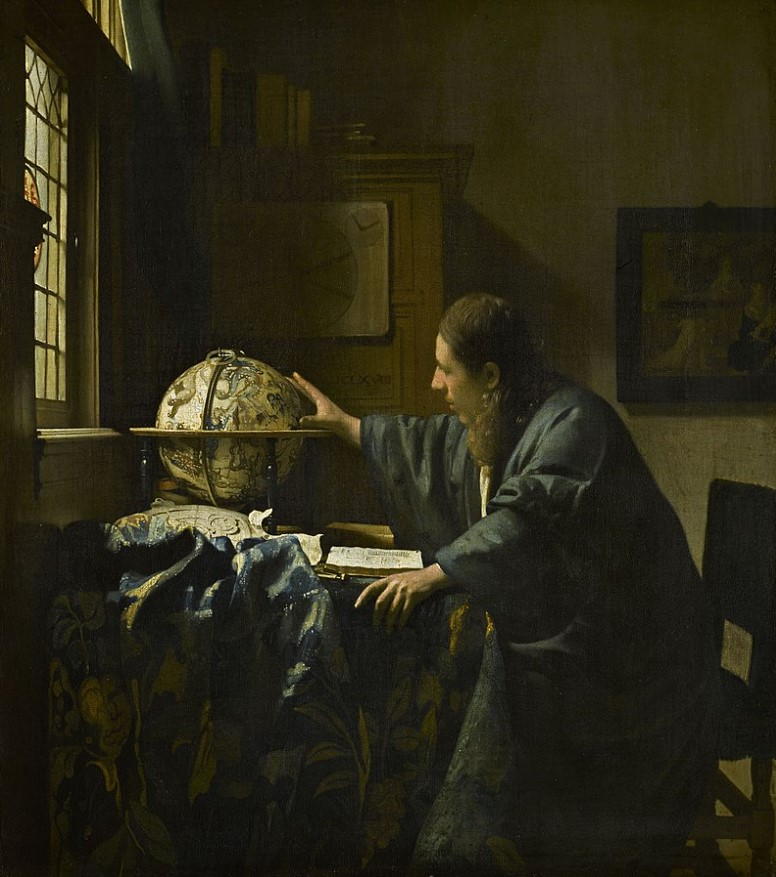
Above, The Geographer and The Astronomer.
From 'A Dictionary of Art and Artists' by Peter and Linda Murray,' on the difference between the paintings in reproduction, such as the images here, and the original paintings: ' ... in the originals the splendour of the colour and the play of light, falling in little pearls of paint on everything in the pictures, transform the everyday scenes into poetry totally unlike the sober prose of the average Dutch master.'
My rapt viewing of 'The Geographer,' the original painting, lasted for hours.

Depth charge exploding after being released by HMS Ceylon, a light cruiser of the Royal Navy, launched 30 July 1943. HMS Ceylon served in both the Atlantic and the Pacific theatres during the Second World War.


The Lochnagar crater, a view of a section and an aerial view.
The Lochnagar crater was created suddenly on 1 July, 1916 on the first day of the Battle of the Somme when an underground mine exploded. It had been planted by British forces, the Tunnelling Companies of the Royal Engineers. The crater left was 21 m deep and 100 m wide. The immediate area was captured and held by British troops.

Buildings and greenery

Buildings, looking towards the countryside. The domed structure - the Wintergardens.


is the New Testament Greek original text for the translation

21. Lancaster over Lincoln Cathedral

Attribution: Bill Booth, CC BY-SA 20 via Wikimedia Commons
Lincolnshire is often referred to as 'Bomber County.' Daniel Swift is the author of the fine book 'Bomber County: The Lost Airmen of World War Two.' He writes about many aspects of Bomber command and its pilots, including his grandfather, James Swift, the pilot of a bomber lost on a June night in 1943. He also writes about the poetry of the Second World War and the bombing campaign.
23.Dunluce Castle
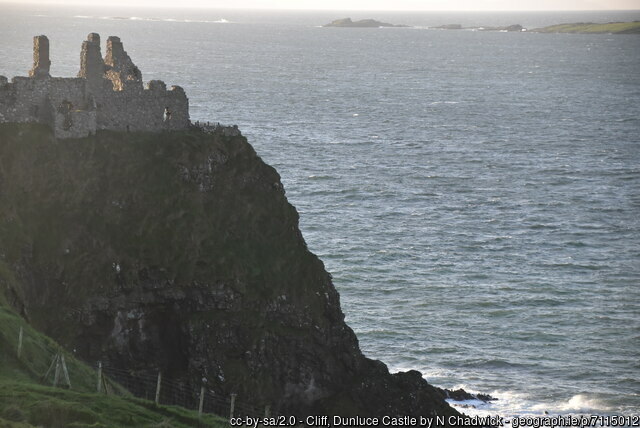
Dunluce Castle, a ruined medieval castle in a dramatic and forbidding setting, on a basalt outcrop in County Antrim, Northern Ireland, between Portballintrae and Portrush.

Image to illustrate the text on the same line

which is an extract from 'Cet animal est très méchant/Quand on l'attaque, il se défend.' 'This animal is very nasty. When attacked, it fights back.' In the image, one of the bison threatened by the wolves has turned to confront the attackers.
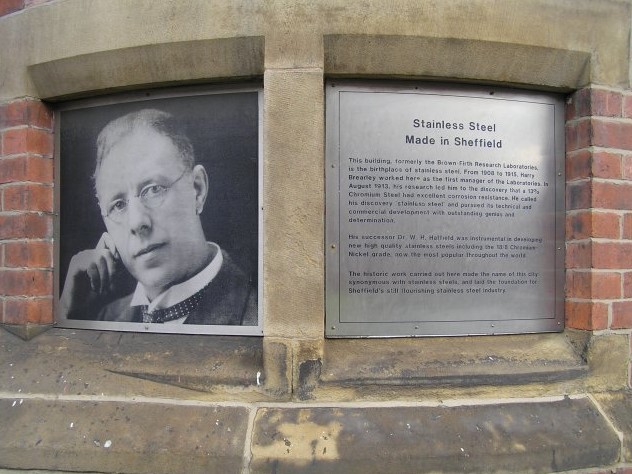
Monument to Harry Brearley, credited with the invention of stainless steel (originally called 'rustless steel') at the former Firth Brown Research Laboratories in Sheffield.
The invention of stainless steel vastly extended the Sheffield cutlery trade but had much wider advantages - a means to stop the deterioration by corrosion of tools, machine parts and so many other products.
Harry Brearley was a metallurgist who left school at the age of 12. His first job was as a labourer in the steel works where his father was employed. Later, he studied at home and in evening classes and acquired a knowledge of steel production techniques and chemical analysis methods used in steel production. He began to examine the advantages of adding chromium to steel, work which led him to the invention of 'rustless steel.' His research continued under the guidance of Dr W. H. Hatfield, who devised an alloy which is now the most widely used corrosion-resistant steel.
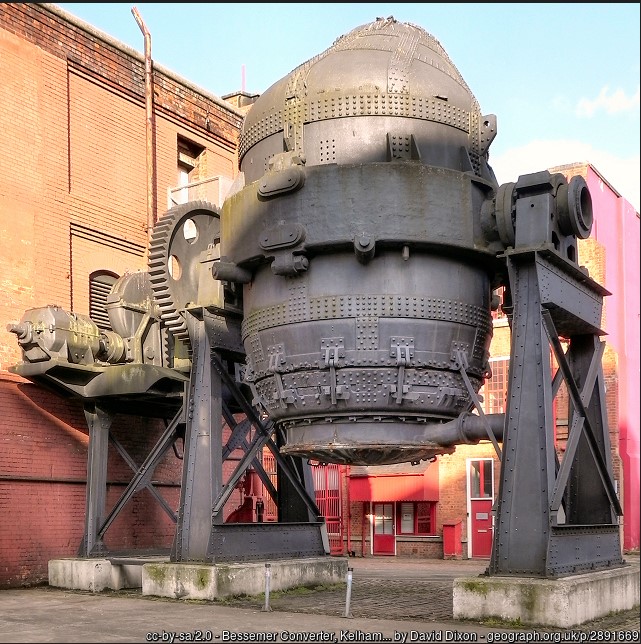
Bessemer converter, Kelham Island Industrial Museum, Sheffield. The Bessemer process enables carbon to be removed from molten (high carbon) cast iron by oxidation of the carbon, producing steel with intermediate, controllable percentages of carbon. Low carbon mild steel has many, many general applications and high carbon steel is used for edge tools.
The Bessemer process, invented in 1856 by Henry Bessemer, made it possible for massive quantities of iron to be converted to steel - 7 tonnes of steel could be made in 30 minutes. Sheffield became the world centre of mass steel production.
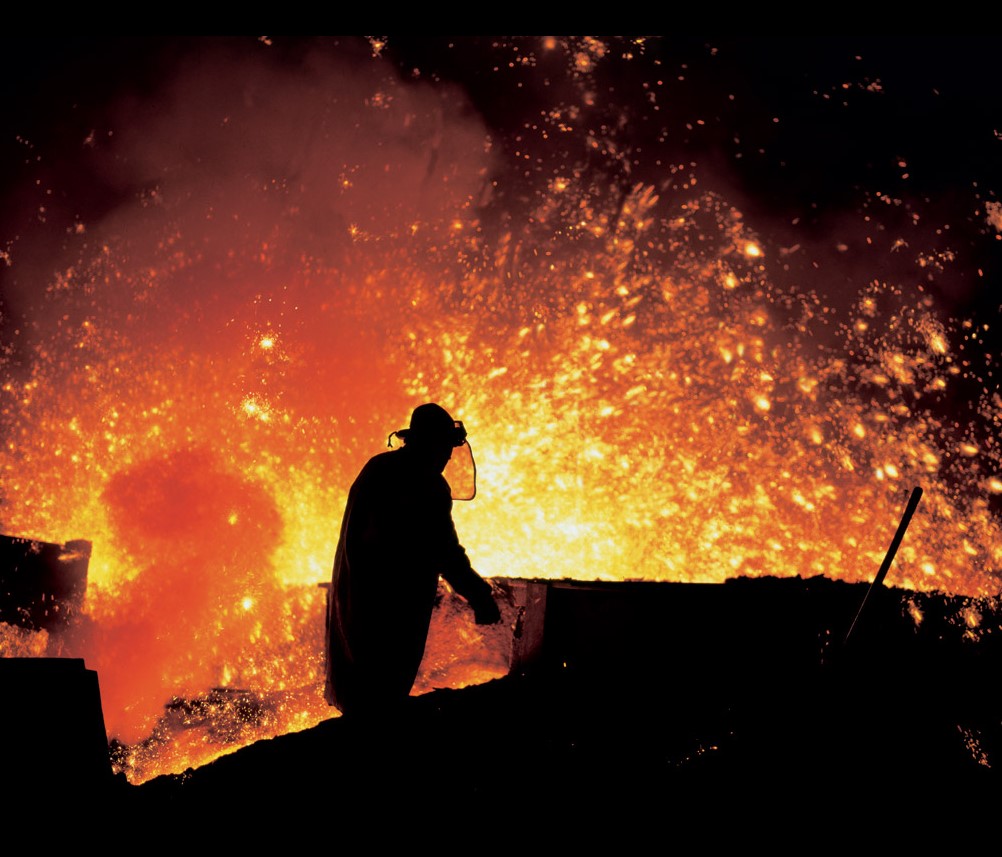
The drama of steel.

Countries which are eligible to join NATO and which would benefit by joining NATO but which aren't members, which haven't applied for membership and aren't 'aspiring members' should be deeply ashamed. I have in mind Austria and the Republic of Ireland, which gain the massive benefits of membership without contributing. Their continuance as free and independent states is dependent upon NATO protection.
From the page
Austria — it’s time to join NATO
Switzerland is far less culpable. The general view would be that Switzerland isn't culpable at all. Unlike Austria and the Republic of Ireland, it takes defence seriously, but an application for membership is surely advisable. What prevents it from applying for membership is above all, a long-standing tradition of independence. Switzerland's independence would be enhanced, not lessened by membership of NATO.
https://www.nato.int/cps/en/natohq/topics_52129.htm
NATO and Switzerland actively cooperate in several important areas, including the promotion of human security, defence institution building and the development and maintenance of capabilities of the Swiss armed forces to work with those of NATO and other partner countries in multinational peace-support operations.
Switzerland is a longstanding, valued partner for NATO.
The 31 NATO members are Albania, Belgium, Bulgaria, Canada, Croatia, the
Czech Republic, Denmark, Estonia, Finland, France, Germany,
Greece, Hungary, Iceland, Italy, Latvia, Lithuania, Luxembourg, Montenegro,
the Netherlands, North Macedonia, Norway, Poland, Romania, Slovakia,
Slovenia, Spain, Turkey, the United Kingdom and the United States.
Sweden applied for membership of NATO in June, 2022.
NATO currently recognizes Bosnia and Herzegovina, Georgia and Ukraine as aspiring members.
28. Bouldering at Stanage Edge, Sheffield

Bouldering: a form of free climbing (without use of ropes) on small rock formations.
How Many Hats?
https://www.youtube.com/watch?v=veUT2Dvo-Pw&ab_channel=daviehowl
Rude chef
https://www.youtube.com/watch?v=C_5ozDIao8g&ab_channel=daviehowl
Force on the Case 1
https://www.youtube.com/watch?v=PaOELExvOk8&ab_channel=RobinVerhagen-Guest
Force on the Case 2
https://www.youtube.com/watch?v=T90a-p-4qfE&t=1s&ab_channel=RobinVerhagen-Guest
Force on the Case 3
https://www.youtube.com/watch?v=Ga9coDIuARc&t=13s&ab_channel=RobinVerhagen-Guest
South Harbour Club Patrol
https://www.youtube.com/watch?v=yglAMXMNKa8&t=4s&ab_channel=HatTrick
32. 19th Century British Coalfields
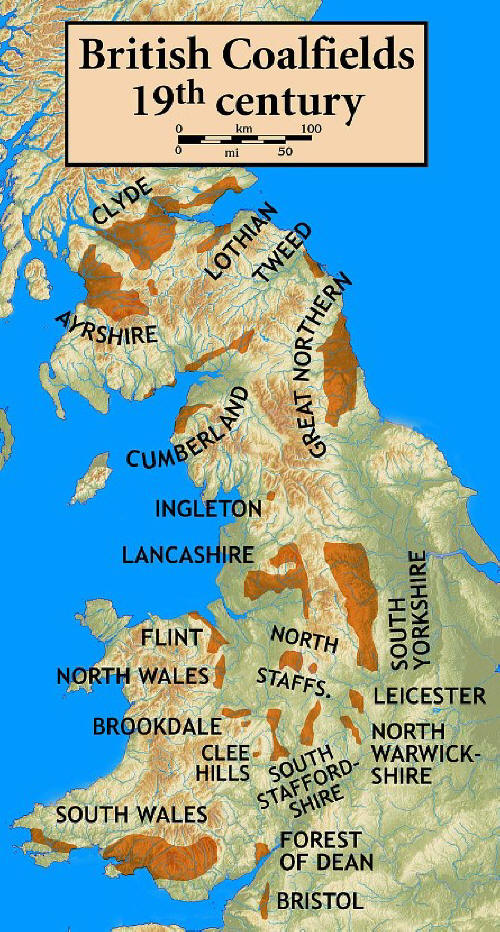
George Orwell, 'The Road to Wigan Pier:'
'In a way it is even humiliating to watch coal-miners working. It raises in you a momentary doubt about your own status as an ‘intellectual’ and a superior person generally. For it is brought home to you, at least while you are watching, that it is only because miners sweat their guts out that superior persons can remain superior. You and I and the editor of the Times Lit. Supp. ... the Archbishop of Canterbury and Comrade X, author of Marxism for Infants – all of us really owe the comparative decency of our lives to poor drudges underground, blackened to the eyes, with their throats full of coal dust, driving their shovels forward with arms and belly muscles of steel.
33. The Huskar Monument and a Parish Church Monument

A memorial to the 26 children who lost their lives in the Huskar Mine Disaster of 1838 when the Huskar Pit (Silkstone Common, South Yorkshire) was flooded during an intense rain storm. The monument features two children, a boy and a girl, in representations of the coal seams where they were working, deep underground. The disaster led to the 1842 Mines Act which prohibited the employment underground of boys and girls under the age of 10. A book by Alan Gallop about the event's history, "Children of the Dark: Life and Death Underground in Victorian England" was published in 2003
The boys who died were
George Burkinshaw aged 10 years.
James Burkinshaw aged 7 years, brothers
Isaac Wright aged 12 years.
Amos Wright aged 8 years, brothers.
James Clarkson aged 16 years.
Francis Hoyland aged 13 years,.
William Allick aged 12 years.
Samuel Horne aged 10 years.
Eli Hutchinson aged 9 years.
John Simpson aged 9 years.
George Barnett aged 9 years.
George Lamb aged 8 years.
William Walmseley aged 8 years.
John Gothard aged 8 years.
James Turton aged 10 years.
The girls who died were
Catherine Garnett aged 8 years.
Hannah Webster aged 13 years.
Elizabeth Carr aged 13 years.
Anne Moss aged 9 years.
Elizabeth Hollin aged 15 years.
Hannah Taylor aged 17 years.
Ellen Parker aged 15 years.
Mary Sellars aged 10 years.
Sarah Jukes aged 8 years.
Sarah Newton aged 8 years
and Elizabeth Clarkson aged 11 years
A monument was erected outside the Parish Church with this hideous inscription: no mention of the human cost of the disaster, instead the claim that this was an instance of divine judgment:
Take ye heed watch and pray for ye know not when the time is. Mark X111 Chap 33 Verse.
THIS MONUMENT
Was erected to perpetuate the remembrance of an awful visitation of the Almighty which took place in this Parish on the 4th day of July 1838.
On that eventful day the Lord sent forth His Thunder, Lightning, Hail and Rain, carrying devastation before them, and by a sudden irruption of Water into the Coalpits of R.C.Clarke Esqr. Twenty six human beings whose names are recorded here were suddenly summon’d to appear before their Maker.
READER REMEMBER!
Every neglected call of God will appear against Thee at the Day of Judgment. Let this solemn Warning then sink deep into thy heart and so prepare thee that the Lord when he cometh may find thee WATCHING.
Oaks Colliery, not very far away, was the site of two separate explosions on 13 December,1866 which caused the deaths of 361 men and boys, including a boy only ten years old. This loss of life was the highest in the history of coal mining in England.

Above, Stanage Edge under sunny skies. More often, the skies are overcast and brooding.
Stanage Edge is a gritstone escarpment in the Peak District, the part of the Peak District called the 'Dark Peak.' The White Peak is the limestone area. The part of Stanage Edge here is on the Derbyshire-South Yorkshire border. Stone was quarried in some parts of Stanage Edge to make grindstones. Circular grindstones are used by the side of many roads to show that beyond these points are entry points to the national park. Stanage Edge is one of the most famous climbing areas in the UK, with climbs of many different standards, including ones which are very, very challenging.
35. Senghenydd colliery diaster. A rescue team leaving the pit
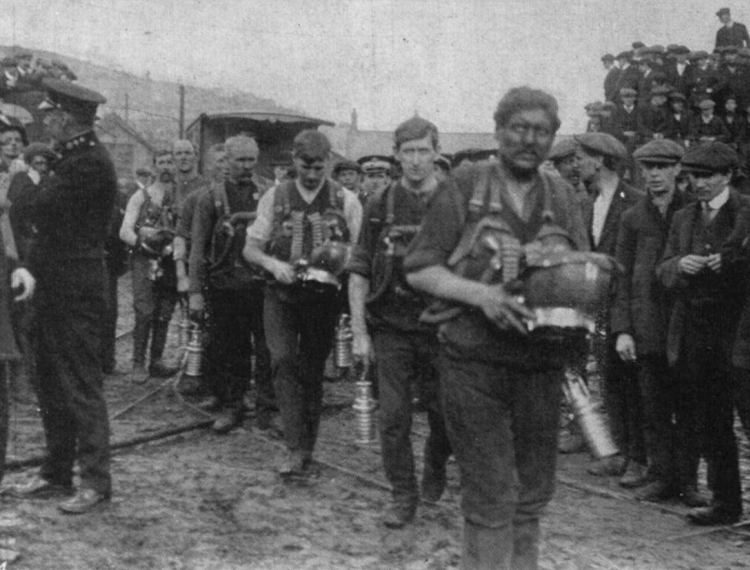
The Senghenydd colliery disaster (Tanchwa Senghennydd) of 14 October 1913 is the worst mining accident in the United Kingdom. It killed 439 miners and a rescuer,
Fires in the workings hampered rescue efforts, and it was days before they were under control.
In 1981 a memorial to the men who died in the disaster was unveiled, followed by a second in 2006, to honour the dead of both the 1901 and 1913 explosions. In October 2013, on the centenary of the tragedy, a Welsh national memorial to those killed in all Wales's mining disasters was unveiled at the former pithead. It shows a rescue worker coming to the aid of one of the survivors of the explosion.
The view that coal miners are, and were, no better than producers of pollution is one I oppose very strongly. This hideous view takes no account of the fact that for a very long period, coal played a central role in the industrial revolution which had so many benefits - but those who carried out the hard, backbreaking, dangerous work received few benefits. The work of the miners sholud be remembered with gratitude.
38. The River Don Engine

Recommended: a short BBC film on the River Don Engine, showing it in action.
https://www.youtube.com/watch?v=jJqUgusvhBE&ab_channel=markansell85
The River Don Engine was built in 1904 and was used for hot rolling steel armour plate. It developed 12,000 horsepower (8.9 MW), and was able to reverse from full speed in 2 seconds. The rapid reverse was an essential feature of an engine used for rolling, as delays would result in cooling of the workpiece. This engine was one of four built to the same design. One of them went to William Beardmore of Glasgow. It's one of the most powerful steam engines ever built. It was last used for commercial work in the 1970s, to roll out reactor shield plates for nuclear power plants.
39. Construction of HMS Audacious at Barrow-in-Furness
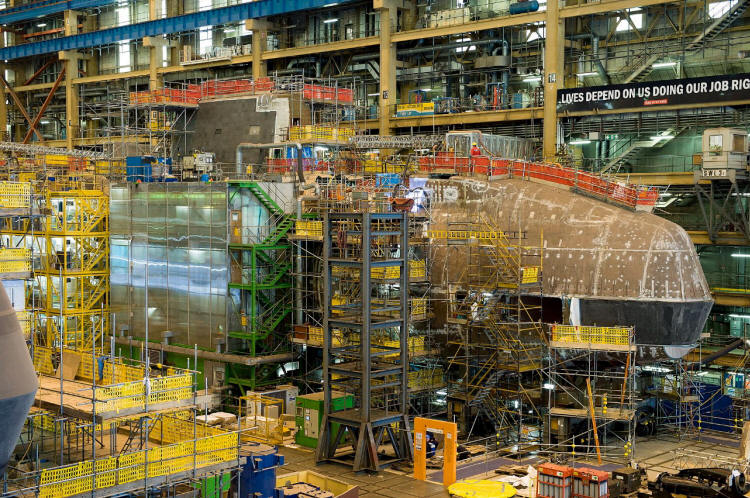
HMS Audacious is the fourth Astute-class nuclear-powered fleet submarine of the Royal Navy.
Construction of the submarine is an astonishing achievement, so too was the work recorded on the page
https://www.royalnavy.mod.uk/news-and-latest-activity/news/2023/november/13/231113-
'Divers and engineers recognised after complex repair to HMS Audacious'
Marine engineers and Charlie Squadron of the Diving and Threat Exploitation Group made complex underwater repairs – that usually need a dry dock – to HMS Audacious during the boat’s historic 11-month patrol of the Mediterranean.
For their skill and effort working inside partially flooded ballast tanks – the critical source of buoyancy keeping the submarine afloat – they received the prestigious Churchill Medal Award from The Institution of Engineering and Technology.
The advanced hunter-killer submarine was on operations away from her base on the Clyde two days short of a year, making it the longest ever deployment of any of the Astute-class submarines.
Defects are commonplace during any deployment, but 3,000 miles from home and on rigorous national tasking – in response to Russia’s unprovoked invasion of Ukraine – there was an extra burden on the engineering department.
The scale and intricacy of the repair had only ever previously been attempted in a dry dock in the UK but, given the importance of Audacious’ mission in the Med, it was unacceptable for the boat to be unavailable.
The team developed highly sophisticated ways of working, allowing divers and the boat’s engineers to enter the cramped main ballast tanks and make repairs on the mechanism that sits just above the waterline, has no natural ventilation or lighting and has a maximum of one metre headroom.
It took the team 19 days to complete the repair, with Audacious able to continue her deployment in the Med for another six months because of their work.
Commanding Officer of HMS Audacious, Commander James Howard, said: “The dedication, innovation and engineering professionalism demonstrated by the team in the face of extreme pressure and under challenging conditions is truly outstanding.
The work of Commander James Howard and his crew is intensely demanding and they deserve recognition for their achievement.
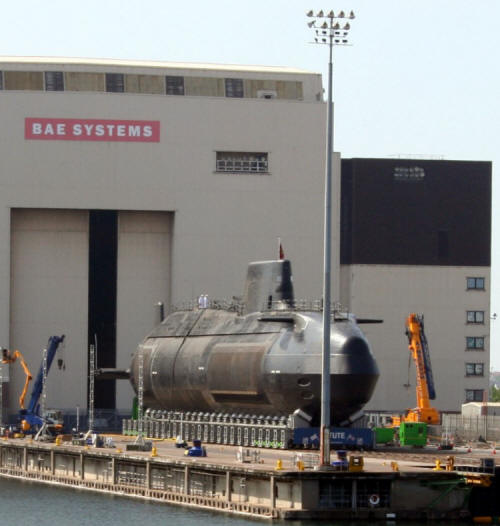
The submarine HMS Astute, constructed at Barrow-in-Furness, on shiplift after being launched.
39. Kelham Island Museum, Sheffield:
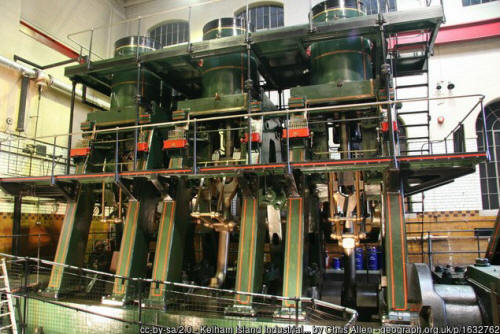
The River Don Engine: a steam engine built in 1904 for rolling steel armour plate. The engine could go into reverse from full speed in two seconds. It was last used commercially to roll out reactor shield plates for nuclear power plants. It's demonstrated at the museum - a thrilling sight, and sound.
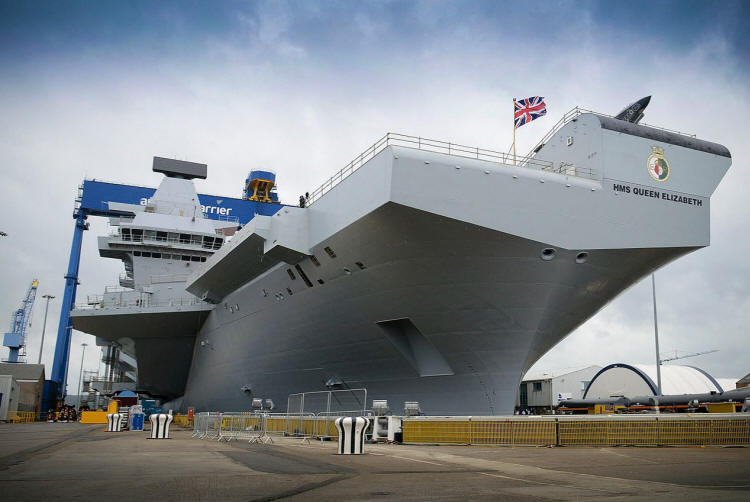
The aircraft carrier at Rosyth Dockyard
39. Barrow-in-Furness Coat of Arms

40. Comedy. Mr Bean

Torvill and Bean
https://www.youtube.com/watch?v=Bb90tC5UpQw&t=5s&ab_channel=ComicRelief%3ARedNoseDay
40. Comedy. Harry Enfield and Paul Whitehouse

Know your limits
https://www.youtube.com/watch?v=LS37SNYjg8w&ab_channel=BBCStudios
The Yorkshireman
https://www.youtube.com/watch?v=jY4tD2Hbg_A&ab_channel=musoneil
Arsenal
https://www.youtube.com/watch?v=Nc2To-pKMSg&ab_channel=SimonMorris
The Scousers appear on Crimesearch UK
https://www.youtube.com/watch?v=H_81lFc-qrc&ab_channel=Neal3
40. Comedy. Catherine Tate

Posh family reacts to northern nanny
https://www.youtube.com/watch?v=g-BVgPeZR-Y&t=3s&ab_channel=BBC
Catherine Tate / Lauren working at Billy Burger Bar
https://www.youtube.com/watch?v=8l5twcFiYd0&t=3s&ab_channel=deafguy2008
Shiitake mushrooms
https://www.youtube.com/watch?v=HpUn9tzwj2E&t=1s&ab_channel=BBCStudios
Gay Son
https://www.youtube.com/watch?v=ifUQq5p5i2g&ab_channel=ShireChic
40. Comedy. Smith and Jones

Tunnel contractor
https://www.youtube.com/watch?v=T8dB4YnLSsE&ab_channel=GeofffromWA
Predictable Lighthouse Keepers
https://www.youtube.com/watch?v=esxPp8stiSc&ab_channel=AdrianBaldwin
Police Sketch with Cockney Rhyming Slang
https://www.youtube.com/watch?v=YdYn0dEql5w&ab_channel=BLOKIESGUILD_UK
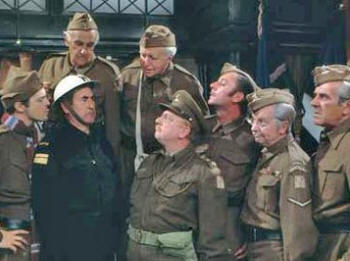
Cornish Floral Dance
https://www.youtube.com/watch?v=82h11POsbt4&ab_channel=AngusYoung

James Bond - Lotus Elite
https://www.youtube.com/watch?v=WJ-6LMcXr7k&ab_channel=Ministrone
£10 note stuck under car tyre
https://www.youtube.com/watch?v=sA-iF45pOlI&ab_channel=quisquose00
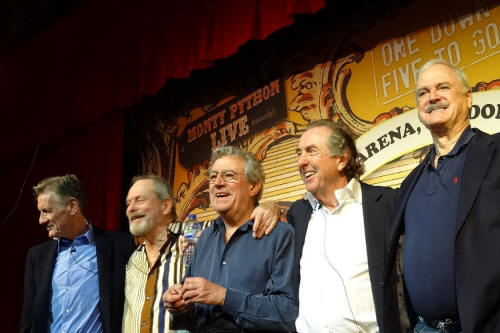
Working Class Playwright
https://www.youtube.com/watch?v=rQDeU6dHX-c&ab_channel=moogrogue
Restaurant Sketch - dirty fork
https://www.youtube.com/watch?v=mi2sUcVkm9E&ab_channel=AndrewBoynton
Architect Sketch
https://www.youtube.com/watch?v=e2PyeXRwhCE&ab_channel=AndrewBoynton

Who reads the papers?
https://www.youtube.com/watch?v=DGscoaUWW2M&t=9s&ab_channel=BBCStudios
You're a banker
https://www.youtube.com/watch?v=KgUemV4brDU&ab_channel=BBCStudios
The North
https://www.youtube.com/watch?v=Y9oKo-QvBpo&ab_channel=GregerTomasson
Sir Humphrey Appleby on the Proper Function of Government
https://www.youtube.com/watch?v=cIYfiRyPi3o&t=21s&ab_channel=rubatirabbit
42. Venice: canal and buildings by night
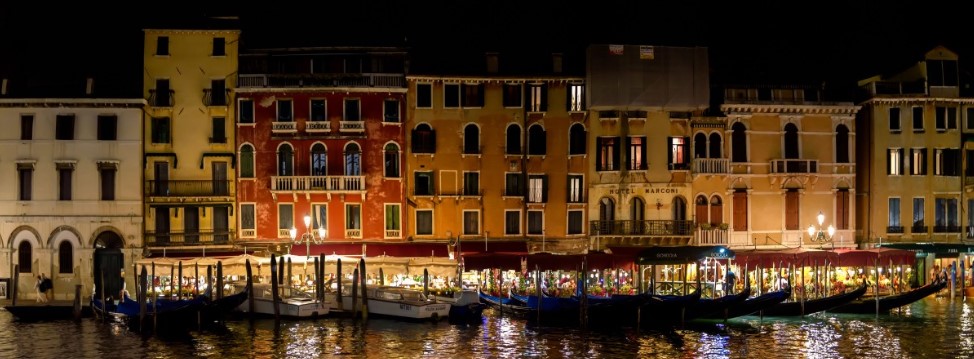
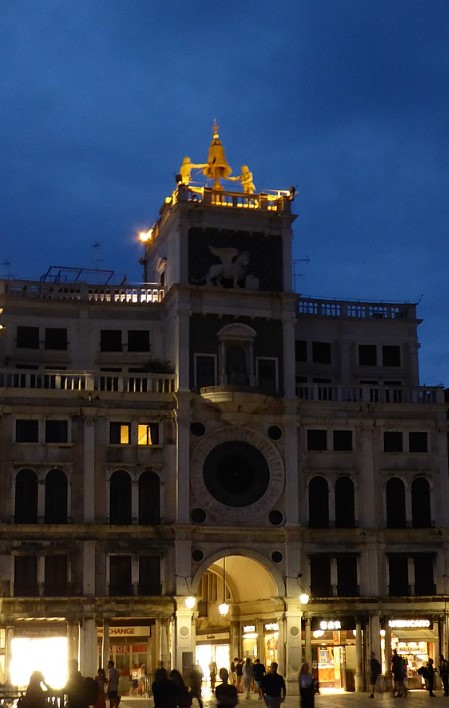
42. Venice clock tower: astronomical clock
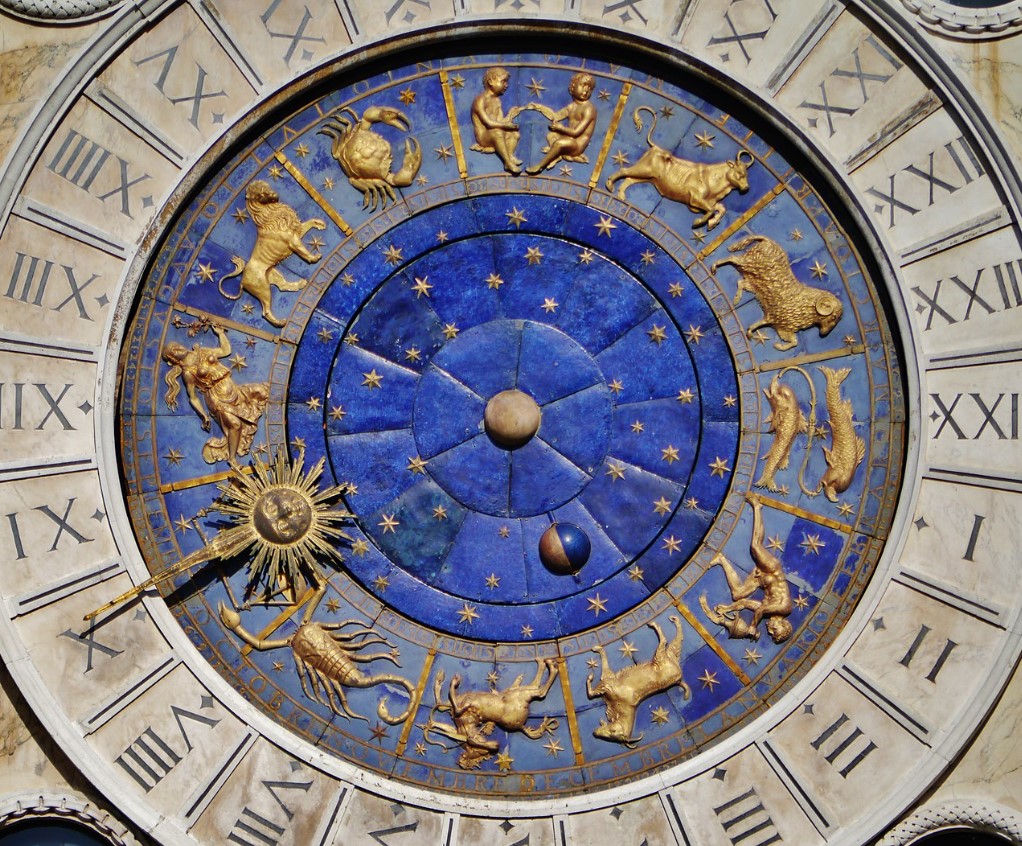
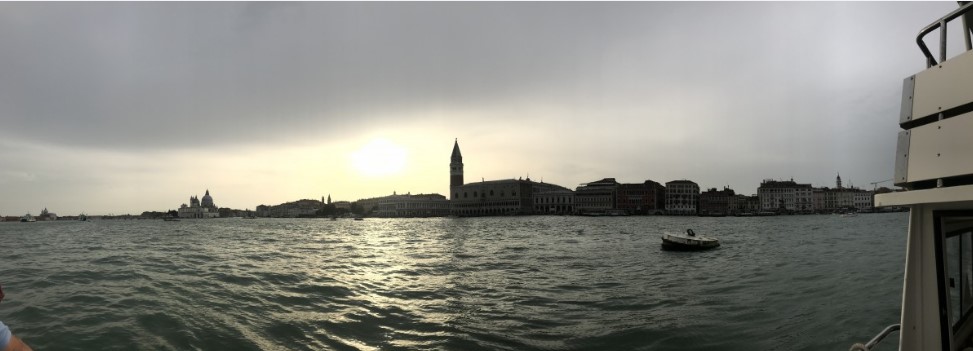
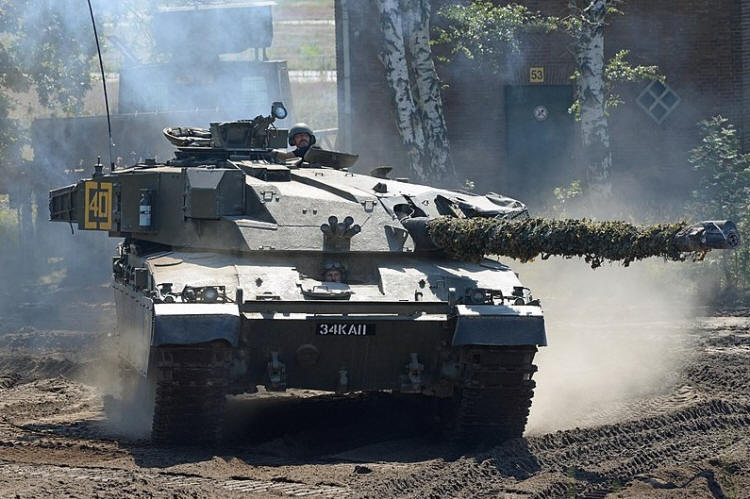
The Challenger 3 tank is under development. The achievement of British defence industry is very, very impressive. The British achievement in maintaining a level of defence expenditure which is much higher than that of many European countries - the Republic of Ireland and Austria come to mind - is impressive. It would be very impressive if defence expenditure significantly higher than 2% of GDP could be achieved. As it is, this country's achievement is reason for pride, not at all shame.
44.Wentworth Woodhouse, West front

The English baroque came to the borough of Rotherham in 1725, when the western range of Wentworth Woodhouse was begun by Thowas Watson-Wentworth.
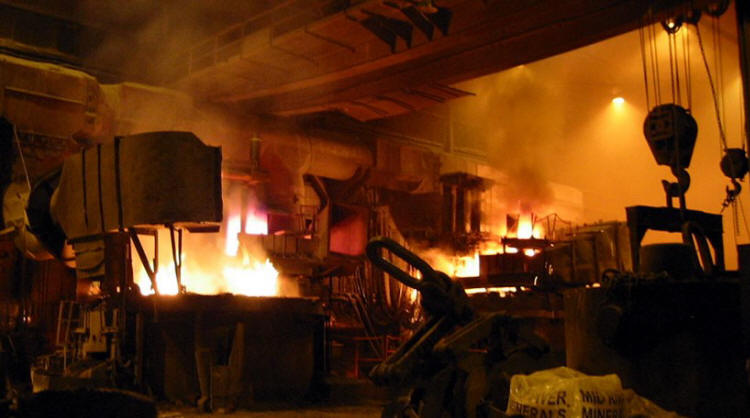
Above, steel mill with two arc furnaces
The two major commercial processes in current use for making steel: basic oxygen steelmaking, using pig-iron from a blast furnace and scrap steel as the main feed materials, fuelled mainly by the exothermic reactions inside the vessel. And electric arc furnace steelmaking, using direct reduced iron or scrap steel as the main feed materials. Electrical energy is used to melt the materials.
45. Lancastria

Lancastria, in the distance, sinking off the French port of St. Nazaire on 17 June 1940, after evacuating British nationals, from France, two weeks after the evacuations from Dunkirk. The ship had been bombed by German aircraft. The exact death toll is unknown: probably in excess of 3,500. Thousands of people were killed, by the bombs, by drowning, by choking on fuel oil, by burning (some of the fuel oil which leaked into the sea, more than 1,400 tonnes of it, caught fire) or were machine-gunned by German aircraft. The BBC site 'WW2 People's War' has an outstanding page on the sinking, very harrowing but with some happier incidents, such as this: 'And then there was the poignant scene of a mother, and her tiny baby being thrown into the water when a lifeboat capsized crying out to others drifting nearby, “My baby! My baby! Please find my baby!” Back came the answer, “It’s all right, Ma, we’ve got her,” as they held her baby well above the water.' There were many acts of heroism, such as the heroism of the man 'covered completely in black oil who dove time after time into the sea from the safety of the rescuing ship to bring floundering people to its side where they could be hauled aboard.'
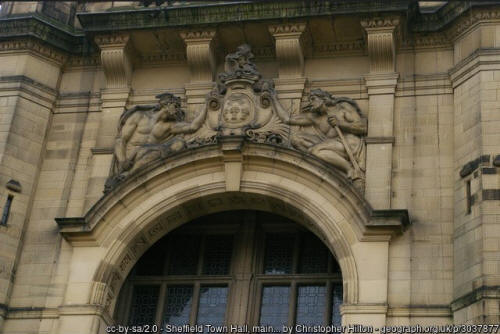
The Sheffield coat of arms displayed on the Town Hall with two supporters, Thor on the left and Vu Vulcan on the right.
Thor belongs to Norse mythology. He gives his name to 'Thursday,' is associated amongst other things with thunder, lightning, storms, some groves and trees, strength, fertility, the protection of humanity. He is generally shown with a hammer in his hand and so has come to be associated with the long and magnificent history of steel-working in Sheffield.
Vulcan is the Roman god of volcanoes, deserts, metalworking and the forge. He is often depicted with a blacksmith's hammer.
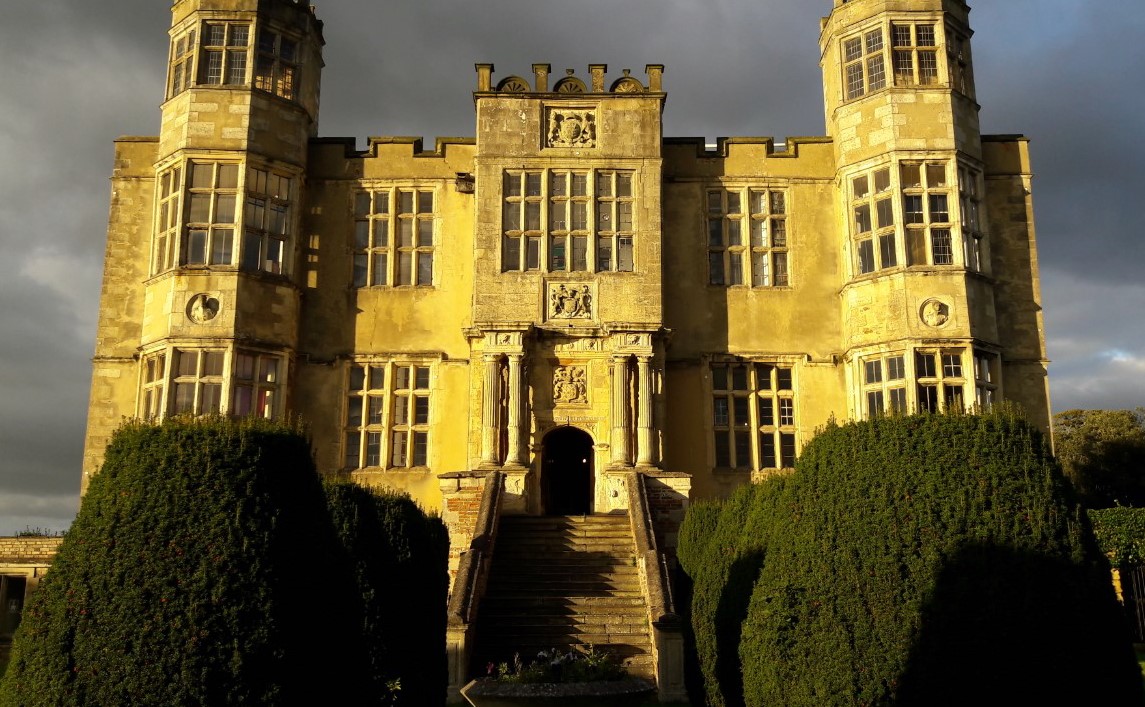
Barlborough Hall, a superb building, not compromised by some of its unworthy and dismal associations. As with so many buildings, the associations have to be taken into account. As with so many buildings, the associations are religious - the persecuted and persecuted and persecuted persecuting religious causes at the time when the building was constructed, and the much more harmless but far from harmless religious causes of today. In the case of Barlborough Hall, it's Roman Catholics who own the place and specifically the Jesuits, who use the building as a school.
48. Africa and Jesus

Ridiculously bad examples of Christian evangelism are slightly more common than shockingly bad examples. The image above is shockingly bad, with a ridiculous component - the phrase 'gorilla warfare.' a spelling mistake. It's 'guerilla warfare' which is obviously intended.
This pitiful rubbish needs, but doesn't deserve, much fuller comment than the concise comment here.
It's generally recognized that the weather can't be altered. If the forecast is for snow in two days and the snow arrives in two days, no belief in Jesus will have been able to influence the outcome. No amount of prayer will have been able to affect the outcome. Despite this, futile prayers were offered, are still offered, for good weather or for rain after drought or for God to calm a storm at sea caused by God, supposedly. When a storm crushes ships and drowns the crew and passengers, it has often been thought - and still is - that this was God's judgment upon sinners.
Faith in Jesus and prayers to Jesus are no more able to prevent drought than prevent the conditions which lead to drought, or to prevent ebola and fever, which is often the symptom of a disease caused by an organism which God supposedly created.
Malaria is mentioned. The belief that belief in Jesus offers any protection against malaria is superstitious rubbish. Malaria is caused by unicellular organisms of the Plasmodium group and transmitted through bites of Anopheles mosquitoes. These organisms were created by Cod according to Christian creationists. The diseases spread by these organisms are the responsibility of God, or yet another demonstration of God's judgment against sinners, according to toxic Christian doctrine. The preventive methods and the medication which do offer relief against this terrible disease are a human achievement, like the rest of modern medicine, owing absolutely nothing to Jesus.
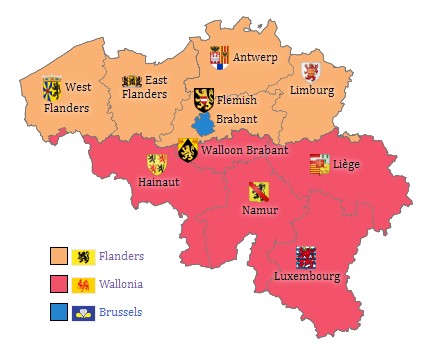
Belgium is a country which interests me strongly, one I respect and admire very much - but restrictions apply, as is the case with all the countries I respect and admire.
Belgium has a reputation as one of the more enlightened countries of the world, at least in modern times. In the long period of 'Christian civilization,' it shared in its barbarities. Leopold II, the second King of the Belgians, was an exception. He was the founder and sole owner of the Congo Free State from 1885 to 1908. From the Wikipedia entry on this monster:
'He ran the Congo using the mercenary Force Publique ... Failure to meet rubber collection quotas was punishable by death. Meanwhile, the Force Publique were required to provide the hand of their victims as proof when they had shot and killed someone, as it was believed that they would otherwise use the munitions (imported from Europe at considerable cost) for hunting. As a consequence, the rubber quotas were in part paid off in chopped-off hands ...
Under his regime, millions of Congolese inhabitants, including children, were mutilated, killed or died from disease and famine.'
52. Wentworth Woodhouse, East front

The East front of Wenworth Woodhouse, which constitutes the longest facade of any English house, twice the length of Buckingham Palace, and contains over 300 rooms. The history of the house and the history of the people who lived there or had a stake in the house - the Fitzwilliam family plays a central role here - is told by Catherine Bailey in her astonishing book 'Black Diamonds: The Rise and Fall of an English dynasty.' These histories are often turbulent or bizarre and unexpected. After the Second World War, the politician Emmanuel Shinwell energetically wanted opencast mining to be carried out near to the house and he was successful in his aims, which took no account of the grade of coal obtainable in this area - as well as other disadvantages of his plan. But he succeeded in his aims, and open cast mining, with spoil heaps, extended almost to the walls of the house.
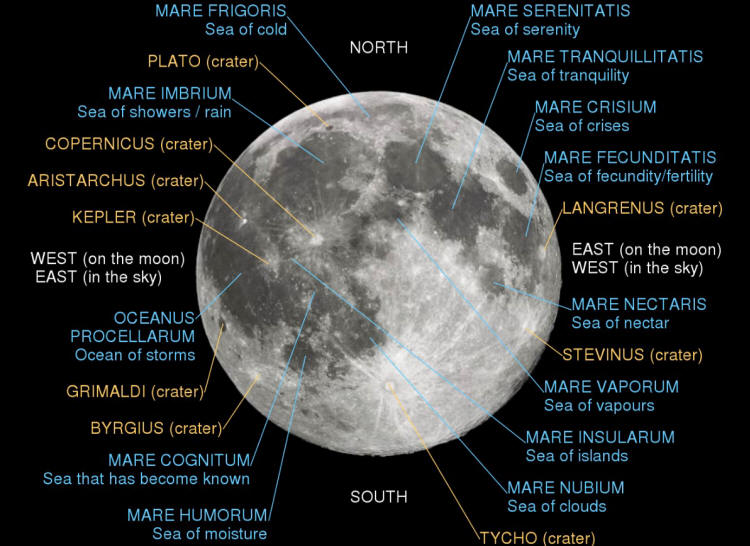
Attribution: Peter FreimanCmgleeBackground photograph by Gregory H. Revera,
CC BY-SA 3.0 <https://creativecommons.org/licenses/by-sa/3.0>, via Wikimedia
Commons
File URL:
https://upload.wikimedia.org/wikipedia/
commons/6/61/Moon_names.svg
Seas and craters of the moon.
Mare: (Latin), 'sea.' None of the seas contain any water, of course.
The names are a fitting display of astronomical knowledge, some of the names of craters honouring scientists who have made important contributions, and many of the names of the seas are things of beauty, such as 'Sea of Serenity' and 'Sea of Tranquillity. All the names are evocative, I find.
57. View of Helmsley, North Yorkshire

Helmsley, which deserves to be so much better known, a fine example of the built environment,. it does so much to encourage swifts, whose numbers have shown a steep decline, and which are completely dependent upon the built environment for their continued survival.
57. View of Ulm

The composure of Ulm, Germany, on the banks of the Danube, with many associations, many claims to fame and prominence, including some which are deeply disturbing.
58. Sinking of the Bismarck

A Swordfish returns to the aircraft carrier Ark Royal after taking part in the torpedo attack on the German battleship Bismarck. After the attack, the Bismarck was unable to escape the British naval forces commanded by Tovey. Bismarck sank after multiple hits by shells and more torpedoes on the morning of 27 May, 1941.
58. Roman Catholic relic: the 'crown of thorns'

A relic of the Roman Catholic Church. According to the Gospel of John, before Good Friday, Roman soldiers mocked Jesus by placing a crown of thorns on his head. The crown here is made up of a circle of cane held in place by gold threads. The supposed thorns - believed to be the actual thorns which formed the crown placed on Jesus' head -were attached to this circle. The crown was moved to the Louvre after being held at Notre-Dame de Paris.

A relic of the Roman Catholic Church: pieces of wood which supposedly formed part of the crib of the baby Jesus were incorporated in the Holy Crib reliquary in the Basilica of Santa Maria Maggiore in Rome.

A short extract on the treatment of heretics from his massive Summa Theologica
With regard to heretics two points must be observed: one, on their own
side; the other, on the side of the Church. On their own side there is the
sin, whereby they deserve not only to be separated from the Church by
excommunication, but also to be severed from the world by death. For it is a
much graver matter to corrupt the faith that quickens the soul, than to
forge money, which supports temporal life. Wherefore if forgers of money and
other evil-doers are forthwith condemned to death by the secular authority,
much more reason is there for heretics, as soon as they are convicted of
heresy, to be not only excommunicated but even put to death. On the part of
the Church, however, there is mercy, which looks to the conversion of the
wanderer, wherefore she condemns not at once, but "after the first and
second admonition", as the Apostle directs: after that, if he is yet
stubborn, the Church no longer hoping for his conversion, looks to the
salvation of others, by excommunicating him and separating him from the
Church, and furthermore delivers him to the secular tribunal to be
exterminated thereby from the world by death.
(Question 11, Article 3, Summa Theologica, Vol. II-II)

Scala Santa: officially, the 'Pontifical Sanctuary of the Holy Stairs (Pontificio Santuario della Scala Santa), a set of 28 marble steps in Rome. The many believers who climb the stairs can only climb on their knees. The belief is that the stairs were the actual steps leading to the praetorium of Pontius Pilate in Jerusalem, used by Jesus on his way to be tried. It was claimed - it still is claimed - that the Stairs were brought to Rome by Saint Helena in the fourth century.
58. Phillips Exeter Academy Library

The Academy Library is in Exeter, New Hampshire and is the largest secondary school library in the world. The architect of this extraordinary building was Louis Kahn.
58. Phillips Exeter Academy Library: cross beams

The cross beams at the top of the atrium of the library diffuse the light which comes from clerestory windows and direct it down the atrium.



From the page
https://www.walsinghamanglican.org.uk/
the section 'The Shrine,' 'The Story So Far:'
'For Richeldis [Richeldis de Faverches, a Saxon noblewoman] the life of prayer and good works was rewarded by a vision in the year 1061. In this vision she was taken by Mary to be shown the house in Nazareth where Gabriel had announced the news of the birth of Jesus. Mary asked Richeldis to build an exact replica of that house in Walsingham. This is how Walsingham became known as England's Nazareth.
'The vision was repeated three times, according to legend, and retold through a fifteenth century ballad. The materials given by Richeldis were finally constructed miraculously one night into the Holy House, while she kept a vigil of prayer.'
For the deluded bishops and other Church of England and Roman Catholic believers who descend on the village of Walsingham, the Age of Faith / Superficial Superstition is still a real presence, like the body and blood of Christ which magically appear in the mass.

HMS Hood, battlecruiser of the Royal Navy. In May 1941, Hood and the battleship Prince of Wales were ordered to intercept the German battleship Bismarck and the heavy cruiser Prinz Eugen, which were on their way to the Atlantic, to attack allied convoys, during the Battle of the Atlantic.
60. Last photograph of HMS Hood

As seen from Prince of Wales, 24 May 1940. Soon, after being hit by shells from the German ships Prinz Eugen and Bismarck, there was a devastating magazine explosion which broke the back of Hood. Hood sank in three minutes, with the bow almost vertical in the water. Of the 1418 men on board, only three survived.
60. The battleship Rodney firing on Bismarck

Bismark was a battleship built for the Kriegsmarine of Nazi Germany. After the sinking of Hood, Bismark was pursued by a large number of warships of the Royal Navy. Bismarck was attacked with torpedoes by Fairey Swordfish bombers from the aircraft carrier HMS Ark Royal. One of these caused severe damage to the ship's steering gear and unable to escape. Under relentless attack from shellfire, it was eventually decided to scuttle the ship. The attacks continued. With the sinking of Bismarck (on 27 May 1940)most of the ship's crew were lost. Of the crew of over 2,200 men,114 survived.
61. The Winter Garden, Sheffield
61. Blast Furnace, Redcar, North Yorkshire
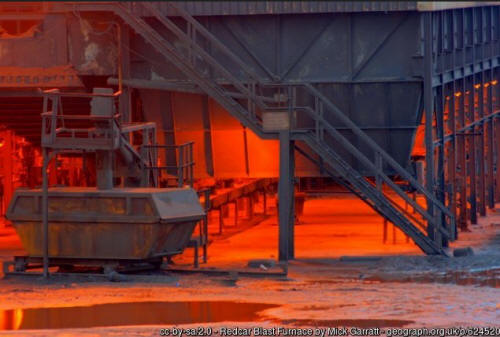
The blast furnace is no longer in use, one of the many losses in the contraction of the Teesside steelworks.
61. The Winter Gardens, Sheffield
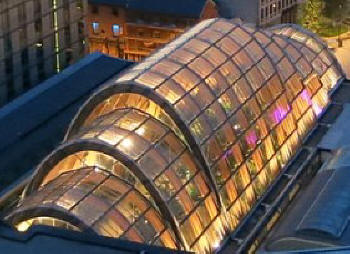

Regensburg: city in Bavaria, Germany, at the confluence of rivers which include the Danube. The medieval centre is a UNESCO World Heritage Site. In the final months of World War 2, a subcamp of the Flossenburg concentration camp was located in the city.
The Messerschmitt Bf 109 aircraft factory and an oil refinery in Regensburg were bombed by the Allies on 17 August, 1943.
67. Wachet auf, ruft uns die Stimme

From the first movement of Bach's cantata 'Wachet auf, ruft uns die Stimme' (Awake, we are called by the voice [of the watchman], BWV 140.
68. Haydn, Symphony 88, Movement 3, Trio

68. Haydn, Symphony 103, Movement 3, Trio
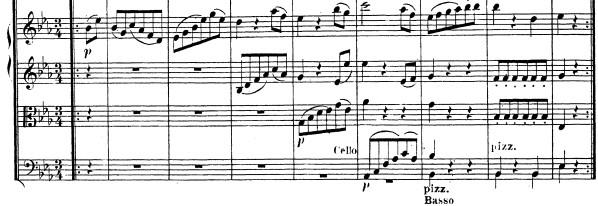
68. Mozart, Concertone K190, Movement 2

69. Beethoven, Quartet Op 132, Movement 3

Section, 'Mit innigster Empfindung' from the movement 'Heiliger Dankgesang eines Genesenen an die Gottheit, in der Lydischen Tonart.'
69. Bach, Sonata 3 for solo violin, BWV 1005, Movement 1

69. Bach, Suite 6 for solo cello, BWV 1012, Movement 1

70. Mahler, Symphony 4, Movement 4

70. Mahler, Symphony 4, Movement 4
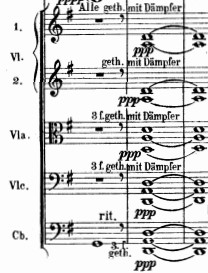
71. Mozart, Symphony 36 (Linz), K 425, Movement 2
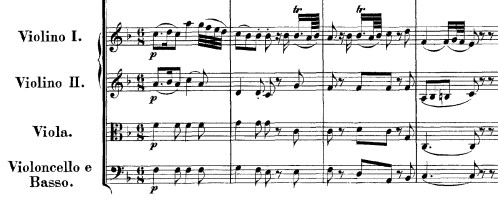
71. Mozart, Symphony 38 (Prague), K 504, Movement 1
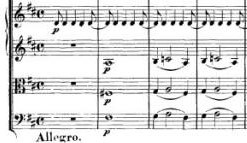
72. Mahler, Symphony 4, Movement 4

72. Tchaikovsky, Serenade for Strings, Movement 4


74. Beethoven violin concerto Op 61, Movement 1

74. Beethoven violin concerto Op 61, Movement 3

74. Bach, Sonata 2 (BWV 1003), Movement 2

